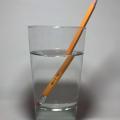435. Metal More Attractive: William Gilbert and Magnetism
The cosmological and methodological implications of breakthroughs in the understanding of magnetism and electricity at the turn of the 17th century.
Themes:
• P.F. Mottelay (trans.), William Gilbert: De Magnete (New York: 1958).
---
• G. Freudenthal, “Theory of Matter and Cosmology in William Gilbert’s De magnete,” Isis 74 (1983), 22-37.
• L. Georgescu, “One Experiment, Different Uses: Floating Magnetic Bodies in Peregrinus, Norman and Gilbert,” Journal of Early Modern Studies 2 (2013), 81-103.
• L. Georgescu, Devising Magnetism: Concepts and Investigative Practices (PhD thesis, Ghent, 2017).
• J. Henry, “Animism and Empiricism: Copernican Physics and the Origins of William Gilbert’s Experimental Method,” Journal of the History of Ideas 62 (2001), 99-119.
• J. Luggin,“‘Trust No One But Yourself’: William Gilbert’s Use of Experiment and Rejection of Authority, Reconsidered,” Perspectives on Science 30 (2022), 925-49.
• S. Pumfrey, “Mechanising Magnetism in Restoration England: the Decline of Magnetic Philosophy,” Annals of Science 44 (1987), 1-22.
• S. Pumfrey, “O tempora, O magnes! A Sociological Analysis of the Discovery of Secular Magnetic Variation in 1634,” British Journal for the History of Science 22 (1989), 181-214.
• S. Pumfrey, “Neo-Aristotelianism and the Magnetic Philosophy,” in J. Henry and S. Hutton (eds), New perspectives on Renaissance thought (London: 1990), 177-89.
• C. Sander, Magnes: Der Magnetstein und der Magnetismus in den Wissenschaften der Frühen Neuzeit (Leiden: 2020).
• E. Zilsel, “The Origins of William Gilbert’s Scientific Method,” Journal of the History of Ideas 2 (1941), 1-32.
Thanks to Laura Georgescu for advice on this episode!







Comments
Add new comment